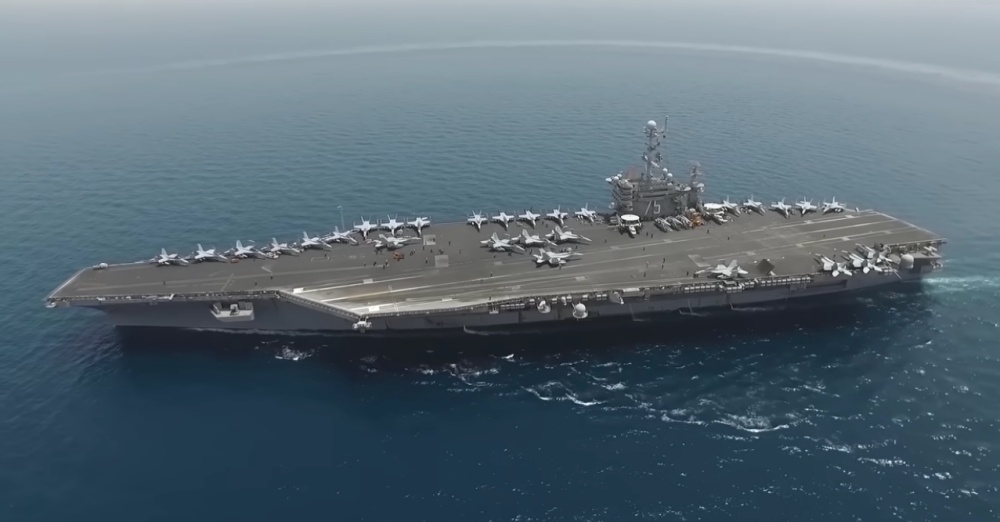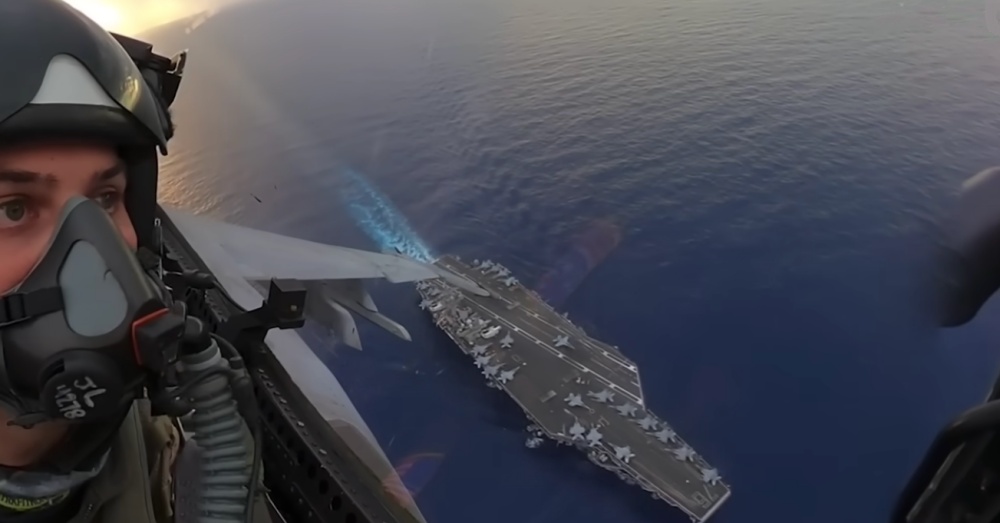
The Aircraft Carrier Strike Group: Offense and Defense
This video gives an amazing visual and factual account of the power of a United States Navy Aircraft Carrier Strike Group. It begins and ends with the powerful centerpiece of this naval entity, the modern nuclear-powered aircraft carrier, and takes a good look at two other U.S. Navy ships that are part of these Carrier Strike Groups, one whose experimental design has been abandoned (the Zumwalt-class destroyer) and the other, one of the most dangerous ships in the surface fleet, the Arliegh-Burke-class guided missile destroyer.
The video begins with the muscle of the strike force, the aircraft carrier. These behemoths are as long as the Chrysler Building in New York is tall. They are driven by nuclear-powered engines that can move these 120-thousand-ton machines through the water at up to an amazing 30 knots. You will see how maneuverable these massive ships are and how fast they can be deployed anywhere in the world. You’ll see how they are tested for durability, both in hull integrity and in stamina.

The aircraft carrier came into being in the United States Navy in the 1920s and has since become the cornerstone of naval power and the means for projecting the might of the United States Navy far and wide whenever the need arises. These modern carriers are not only capable of launching a powerful offensive force with their dozens of fighter planes, helicopters, and even drones. They are also much more capable of defending themselves with those same assets and are now outfitted with more modern deck-based defensive weapons as well.

But it is the other ships in the strike group that provide both additional offensive and defensive support and protection for the leader of the pack, the carrier. This video looks at two destroyers, the Zumwalt-class destroyer and the Arleigh-Burke-class guided-missle destroyer.
The Zumwalt-class destroyer was a truly experimental design. Its design was rooted in the idea of stealth technology to make the ships more difficult to be “seen” on radar. They looked so unlike any other ship design, as a result of their sloping contours that seem strange to the eye. It works well in that sense. It is very difficult to track on radar, but the ship’s armaments were not as well thought out. They were under-armed. They also had a different propulsion system. It’s kind of like the “Tesla” of the sea. It is powered by an all-electric propulsion system, which is very powerful for producing speed, etc. But the flaws outweighed the benefits, and it is no longer being produced.

On the other hand, the Navy’s Arleigh-Burke-class guided-missile destroyers are fast, and also more difficult to find and follow on radar, but they are armed to the teeth. As the narrator says in the video, almost every inch of this Arleigh-Burke-class destroyer is bristling with offensive and defensive weapons systems, from guided missiles to torpedos and the latest rapid-fire defensive weaponry and cannons. They really are some of the most dangerous ships in the fleet. The aircraft carrier strike group is made up of these three ships, along with supply ships and tankers, as well as submarines. They are, in other words, a force to be reckoned with and to be respected.
The video is well done and will give you a clear sense of what U.S. Navy Aircraft Carrier Strike Groups look like, how they operate in both offensive and defensive contexts, and what they are capable of when called upon during times of war or peace. It is something to behold.